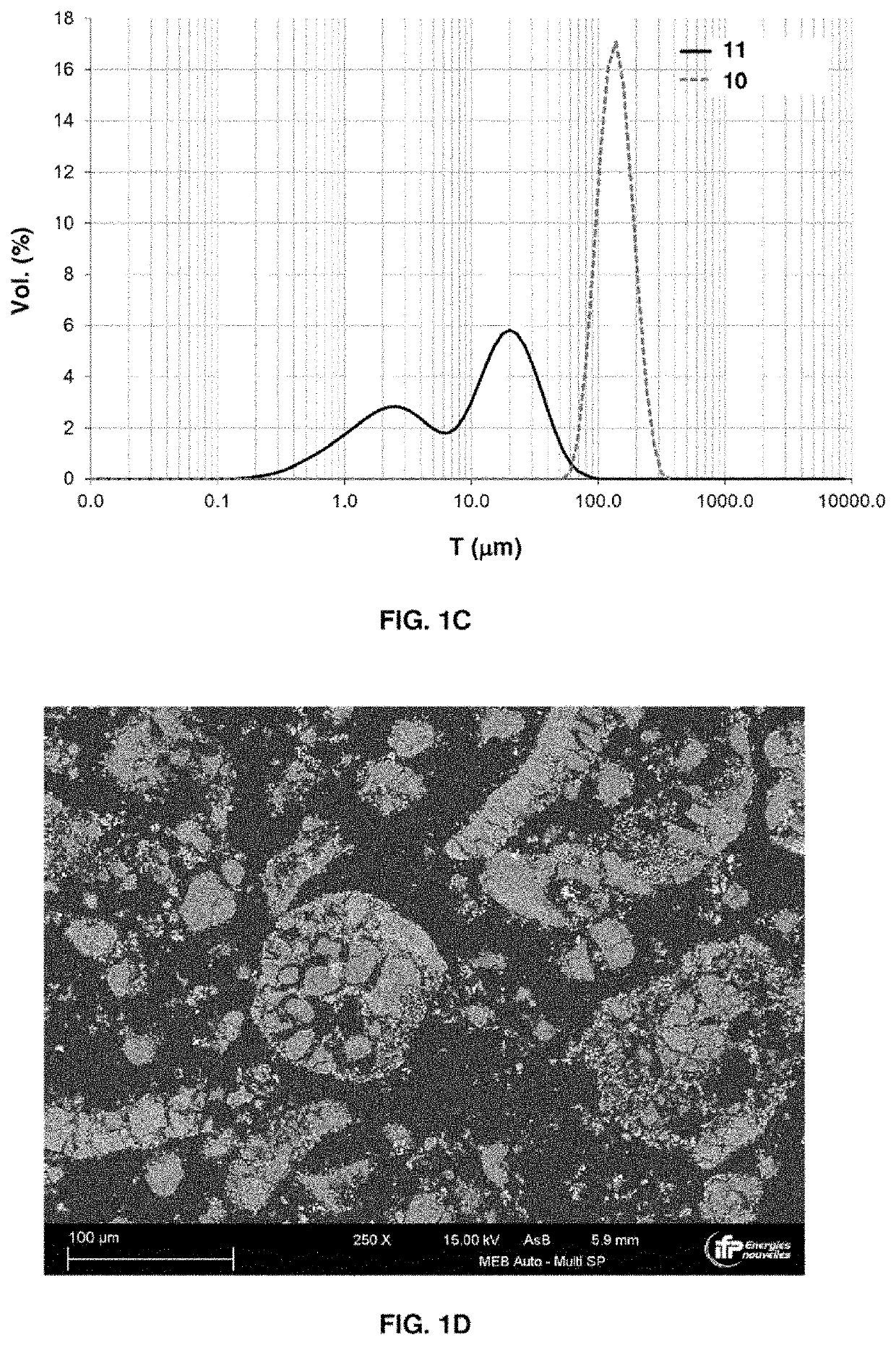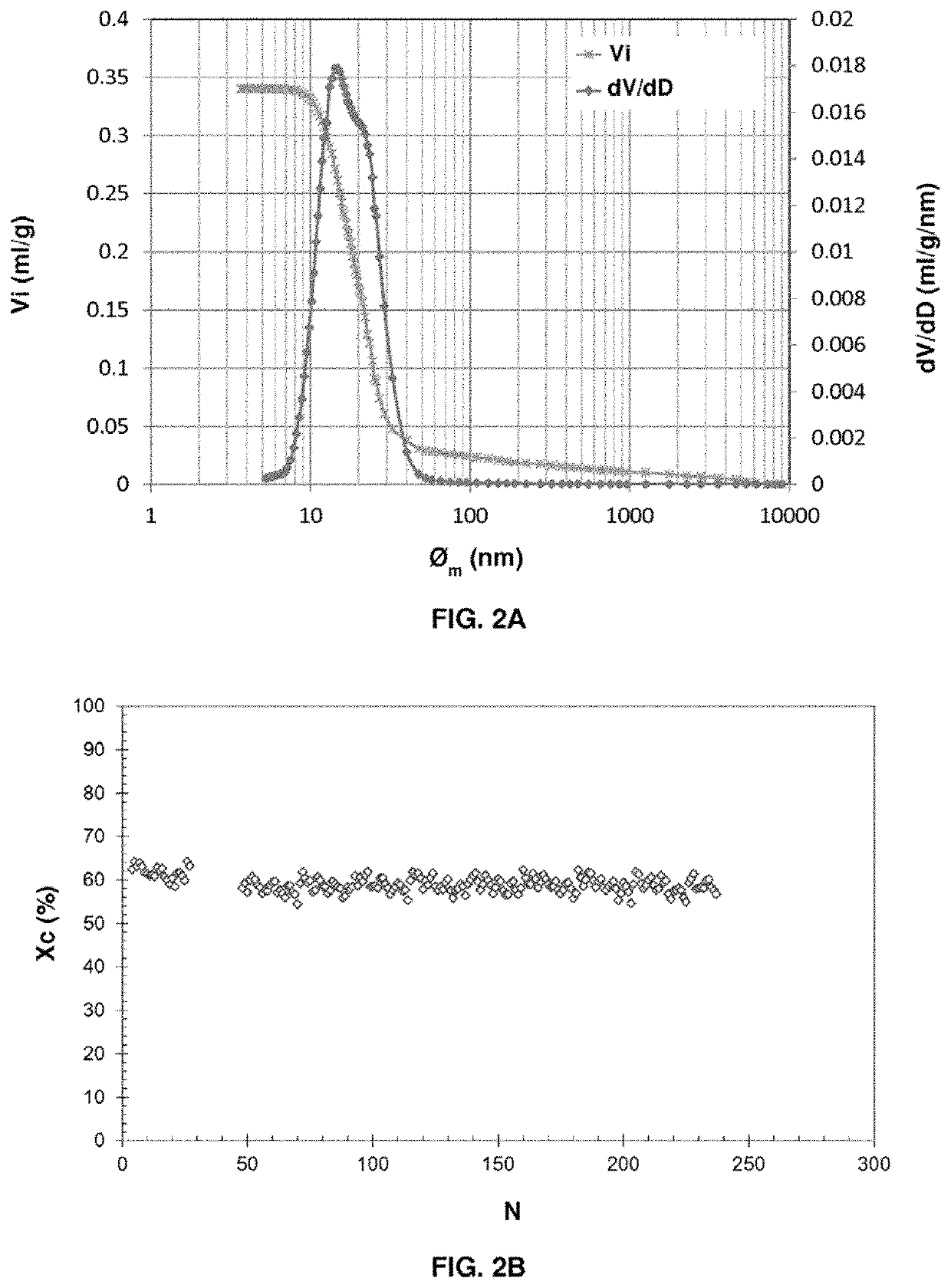Macroporous oxygen carrier solid with a refractory feldspar/feldspathoid, method for the preparation thereof, and use thereof in a chemical-looping oxidation-reduction method
a technology of refractory feldspar and oxygen carrier solid, which is applied in the field of oxygen carrier solid, can solve the problems of significant and rapid reduction of oxygen transfer capacity, affecting the operating cost of the process, and the lifetime of particles in the process, so as to reduce investment costs and/or operating costs
- Summary
- Abstract
- Description
- Claims
- Application Information
AI Technical Summary
Benefits of technology
Problems solved by technology
Method used
Image
Examples
example 1
t for Oxygen Carrier Solids in a Batch Fluidized Bed
[0209]The aging of the oxygen carrier solids in a batch fluidized bed was carried out in a unit consisting of a quartz reactor, an automated system for supplying the reactor with gas and a system for analyzing the gases leaving the reactor.
[0210]This aging test approximates the conditions of use of the oxygen carrier solid in a chemical looping redox process, in particular a chemical looping combustion redox process.
[0211]The gases (CH4, CO2, N2, air) are distributed by mass flow meters. For safety reasons, a nitrogen purge is carried out after each reduction period and oxidation period.
[0212]The height of the quartz reactor is 30 cm, with a diameter of 4 cm in its lower part (around 24 cm from the top), and of 7 cm in its upper part. A quartz frit is placed at the bottom of the reactor to ensure the distribution of the gases and a good fluidization of the particles. Another frit is placed in the upper part of the reactor to preven...
example 2
[0222]According to this example 2, an oxygen carrier solid is formed from alumina as a support matrix for a redox active mass of copper oxide(s).
[0223]The alumina used for this example is Puralox SCCa 150-200 marketed by Sasol. The particle size distribution of the aluminous support indicates Dv10=104 μm, Dv50=161 μm and Dv90=247 μm.
[0224]The pore volume of the particles measured by mercury porosimetry is 0.450 ml / g, and the pore size distribution is between 5 and 15 nm, centered on 9 nm. The macropore volume of the support measured by mercury porosimetry is 0.007 ml / g (1.5% of the total pore volume).
[0225]The nitrogen adsorption isotherm of the Puralox makes it possible to measure a specific surface area of 199 m2 / g, a micropore volume (pores<2 nm) of zero and a mesopore volume (2 nm<pores<50 nm) of 0.496 ml / g.
[0226]233 g of Puralox alumina were impregnated according to the dry impregnation method, with 96.5 g of copper nitrate trihydrate dissolved in the nec...
example 4
[0249]According to this example 4, an oxygen carrier solid is formed comprising a celsian ceramic matrix within which a redox active mass of copper oxide(s) is dispersed.
[0250]The oxygen carrier solid according to this example is obtained from a BaX macroporous zeolite precursor (BaX stands for barium-exchanged X zeolite), using the following steps:[0251]agglomerating NaX zeolite crystals with an Si / Al atomic ratio=1.25 and a number-average diameter equal to 1.5 μm, with kaolinite and silica, and shaping by granulation, followed by drying and then calcining at 550° C. in a stream of nitrogen for 2 h, and screening of the agglomerates obtained so as to recover particles having a particle size of between 200 and 500 μm, with a volume median diameter of around 350 μm.[0252]zeolitizing the binder by contact of the particles obtained, placed in a glass reactor, with an aqueous solution of sodium hydroxide with a concentration of 100 g / l at a temperature of 100° C. ...
PUM
| Property | Measurement | Unit |
|---|---|---|
| melting point | aaaaa | aaaaa |
| size distribution | aaaaa | aaaaa |
| size distribution | aaaaa | aaaaa |
Abstract
Description
Claims
Application Information
 Login to View More
Login to View More - R&D
- Intellectual Property
- Life Sciences
- Materials
- Tech Scout
- Unparalleled Data Quality
- Higher Quality Content
- 60% Fewer Hallucinations
Browse by: Latest US Patents, China's latest patents, Technical Efficacy Thesaurus, Application Domain, Technology Topic, Popular Technical Reports.
© 2025 PatSnap. All rights reserved.Legal|Privacy policy|Modern Slavery Act Transparency Statement|Sitemap|About US| Contact US: help@patsnap.com



